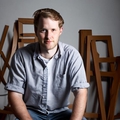
Warm White vs. Soft White Light Bulbs: Which Is Best for Your Workspace?
Table of Contents
When it comes to lighting your workspace, choosing the right type of lightbulb can make a big difference in how comfortable and productive you feel. Two common household bulb options are warm white and soft white, but many people are unsure of the differences between them.
In this article, we will talk about warm white vs. soft white light bulbs and how their varying color temperatures impact ambiance, work conditions, and eye strain. By the end, you'll understand which is best suited for your specific workspace and tasks.
What Are Warm White and Soft White Light Bulbs?
Warm white and soft white light bulbs have subtle differences in their color temperature, measured in Kelvin (K), that impact the lighting mood and visual acuity.
Moreover, warm white bulbs range between 2700K and 3000K, while soft white lights have a higher temperature of 3000K to 3500K.
Though similar, a warm white light would have a noticeably yellow-toned glow compared to the brighter white shade of soft white lighting. You can instantly recognize this difference in a white desk setup.

Warm White vs. Soft White Bulb: The Differences
Before showing you the differences between warm white vs. soft white, it is important to understand two key specifications: watts and kelvins.
What to Know about Watts and Kelvins?
Watts indicate the bulb's energy consumption and brightness, with higher-watt bulbs being more powerful light sources.
Kelvin (K), on the other hand, is the universal scale used to measure a light's color temperature. The higher the K, the cooler (bluish-white) the light will appear, and vice versa for lower temperatures.
Furthermore, the bulb's wattage and color temperature work together to determine aspects such as brightness level, the shade of white light, and suitability for tasks.
Now, let's break down their key differences:
1. Color Temperature
LED light bulbs come in various correlated color temperatures (CCT) that impact the ambiance. Some common types include:
- Soft white (2700-3000K): Warm, incandescent-like light that promotes relaxation - ideal for areas like bedrooms.
- Warm white (3000-3500K): Slightly brighter than soft white with a touch of blue - best for living rooms.
- Bright white/daylight (4000-5000K): Crisp light closest to natural sunlight - good for focus-heavy tasks.
- Cool white/daylight (5000-6500K): Very bright and sterile white light - optimized for industrial use.
Knowing your lightbulb's wattage, kelvin rating, and how different temperatures affect moods will allow you to select the perfect bulb type for specific spaces.
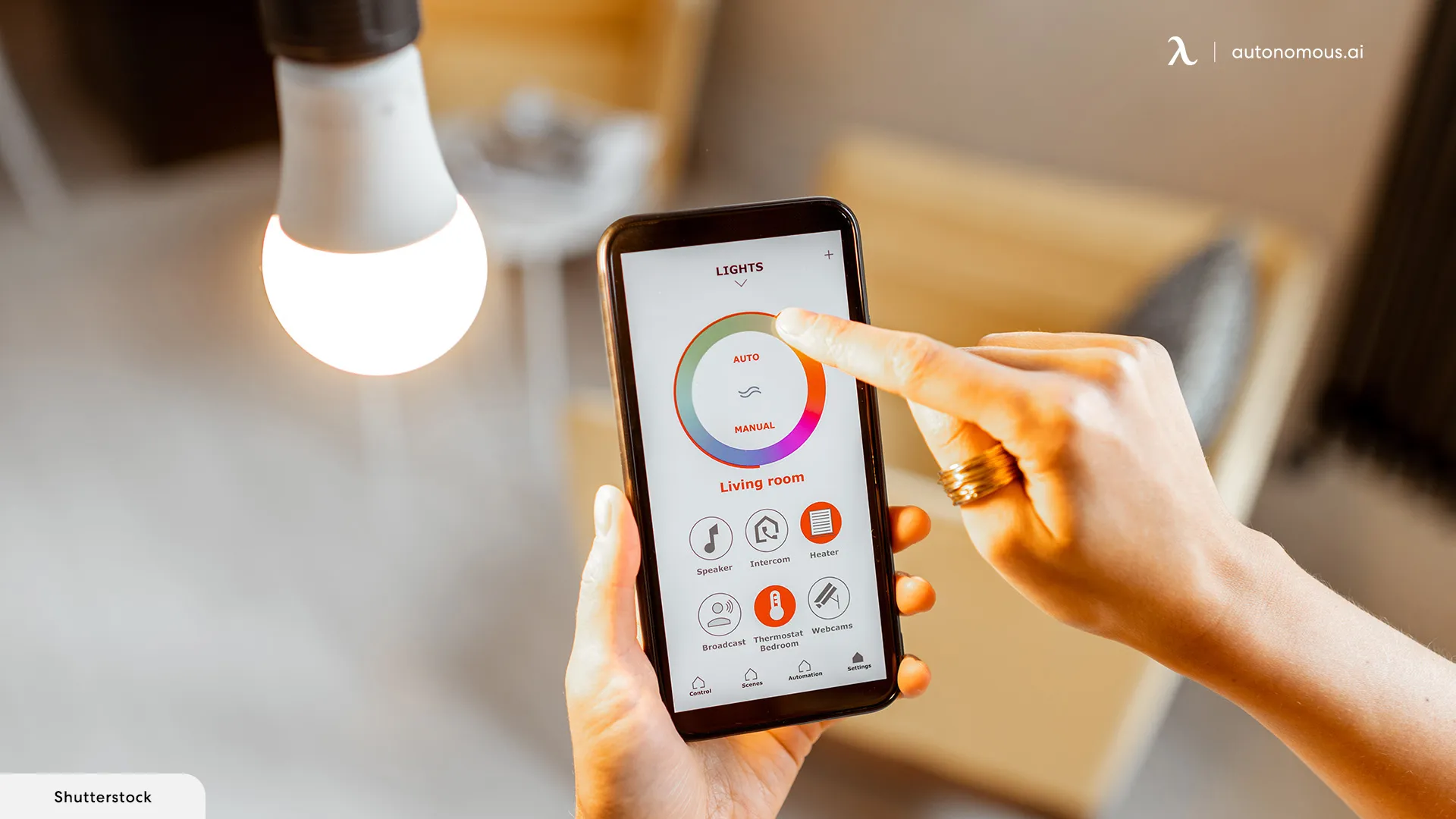
2. Tonal Quality
Though they fall in a close kelvin range, warm white and soft white light bulbs contrast in their tonal quality.
Warm white light has a noticeably yellow hue compared to soft white's brighter tone. The light appears more cozy and embraces objects in a golden glow.
On the other hand, soft white casts light with subtle hints of blue in its white tone, making colors appear a tad truer to life but not as yellow as warm white - perfect for a clean desk setup.
Furthermore, warm white light works well for low-light tasks such as casual reading before bed, while soft white is better for mid-lit tasks where accurate colors are important.
Warm white is suitable for indoor, restful spaces such as bedrooms and living rooms. However, soft white with its true-to-life tones is perfect for designing an office desk setup and workstation requiring precise vision.
So, while differentiating between white light vs. yellow light, we now know that the warmer tone gives off a cozier yellow glow, while the softer one produces a brighter white light with hints of blue for clearer vision.
3. Ambiance
A room's ambiance depends greatly on the type of light source. Different light temperatures elicit different feelings and portray spaces uniquely.
Warm white makes rooms appear cozy and relaxing - it's preferred for leisure areas such as family rooms. Soft white lends a clean, sterile feel suitable for productive spaces - it's best for home offices requiring a minimal desk setup.
Cool daylight lighting feels energetic but may tire the eyes quickly, which might be best reserved for outdoor or utilitarian spaces. Mixing light types, such as warm white floor lamps with bright white overhead lights, creates balanced, inviting spaces for focusing and unwinding.
Choosing a suitable bulb color temperature sets the stage for all kinds of activities in each room through subtle psychological impacts of light on moods and perceptions.
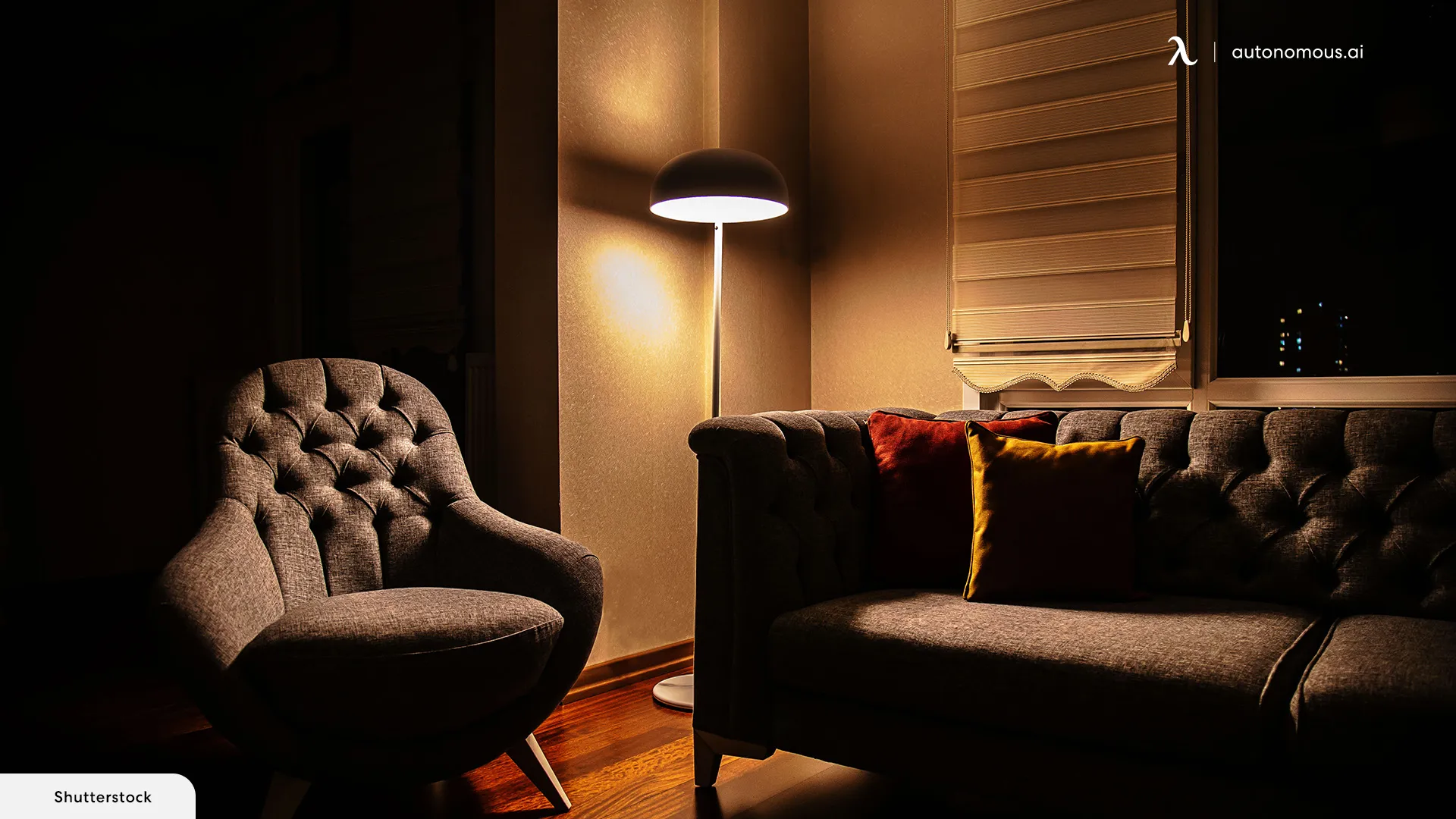
4. Mood and Energy
Some research has found that warmer-colored light can promote relaxation, while cooler tones can increase alertness.
Soft white light can boost performance for tasks requiring mental acuity and focus during the daytime hours. However, warm white could help induce a mood better suited for winding down in the evenings.
5. Eye Strain
Both warm white and soft white produce light that is gentler on the eyes than harsher, cool, or daylight bulbs. Nevertheless, soft white's slightly cooler tones may cause less eye strain over extended periods than warm white's warmer light.
If you use a workspace for several hours every day, using soft white bulbs can help minimize fatigue.
Now that we've covered the key differences between warm white and soft white light temperatures let's look at which type may be best suited for different workspace environments and tasks.
Not All Office Rooms Need the Same Color Temperatures
Since each workspace has specific needs, selecting the right light temperature tailored to your living spaces can boost productivity. Here's what you should do in specific rooms:
- Reception/lobby: Bright, soft white or cool white lights create a polished, professional first impression.
- Conference room: Soft white balanced with some warm white lights can create a conducive environment for collaboration and discussions.
- Private office: Mixing warm white floor lamps and soft white ceiling fixtures strikes a balance between focus and relaxation.
- Break room: Intimate, warm white lighting fosters staff bonding over coffee or meals.
- Warehouse/storage: Crisp, cool white effectively illuminates large spaces and helps in object recognition.
Choosing between warm white and soft white bulbs or a mix can establish optimal lighting for each work setting, which can help maximize employee well-being and productivity.
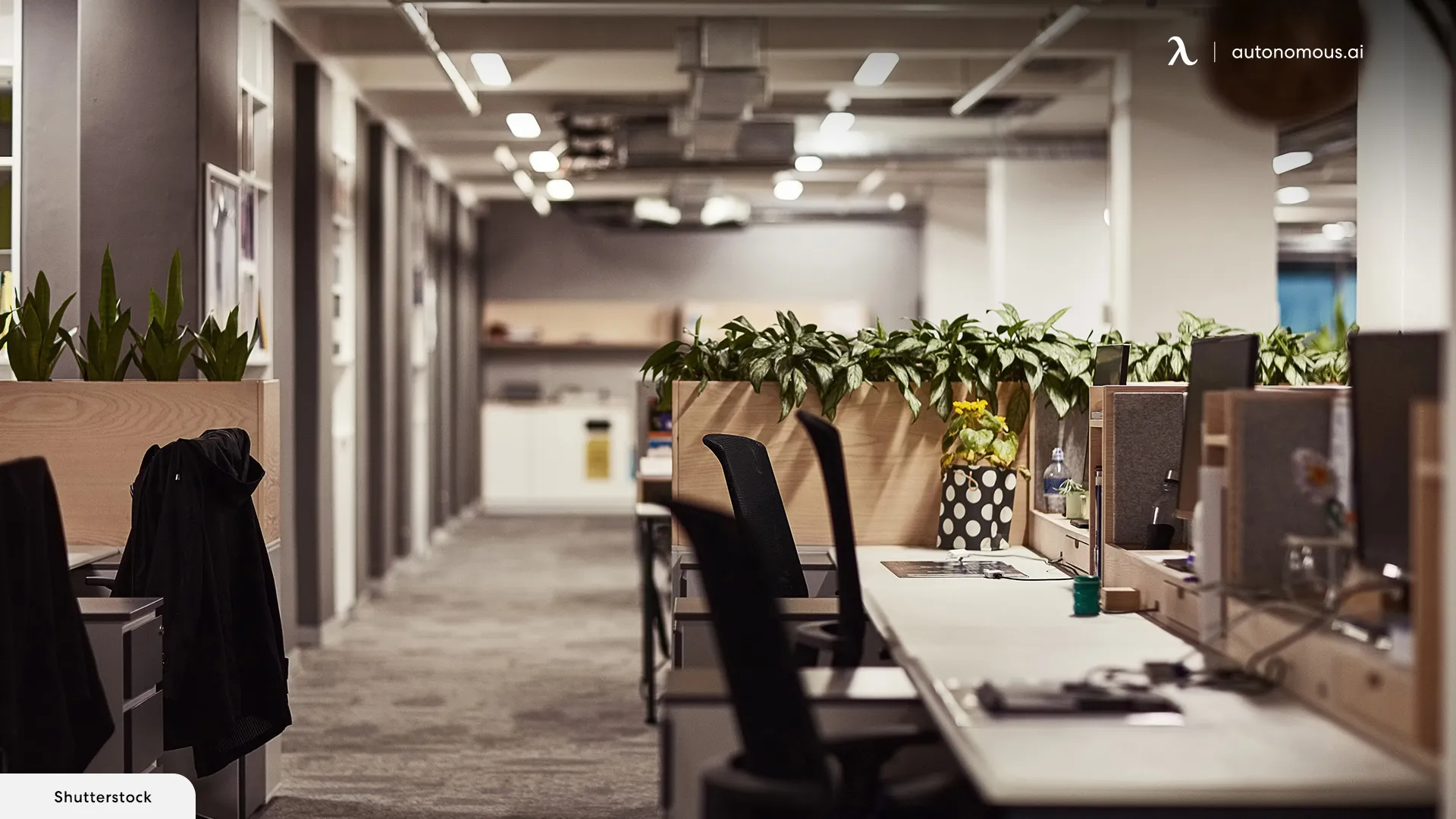
The Impact of Lighting on Productivity and Mood
Selecting the right light for your workspace isn't just about making things bright enough to see. Moreover, the type of light - whether it's soft white vs. warm white bulbs - can really change how you feel and work.
The Effect on Work and Well-being
Light plays a big part in how productive we are. Brighter, cooler lights (like those in the soft white range) tend to make people feel more awake and alert. This can be great for tasks that need a lot of focus.
On the flip side, warmer tones (like you see with warm white bulbs) create a relaxing atmosphere, which can help reduce stress, making it easier to think clearly and stay calm, even during busy days.
Setting the Right Mood
Have you ever wondered, "Is soft white the same as warm white?" While they may seem similar, each creates its own vibe. Soft white lights are bright and crisp without being harsh, which are perfect for offices where you need clarity without the glare.
Warm white lights, in contrast, cast a cozier glow, enhancing comfort and making a space feel welcoming. Depending on what you need from your workspace, choosing between these can make a big difference in your mood and energy levels throughout the day.
By understanding how different light temperatures affect us, we can set up our workspaces to not only look good but also help us feel great. This boosts our productivity and makes the hours we spend working more enjoyable and effective.
Ergonomic Lighting for Workspaces
Proper lighting can reduce eye strain and keep you comfortable, which is crucial for those long hours at the desk. When it comes to ergonomic lighting, the battle between warm white vs. soft white LED bulbs is significant.
Strategic Placement for Maximum Comfort
Correctly positioning your lights is crucial. For example, ensuring that light sources are placed to minimize shadows can make reading and writing tasks much more comfortable.
This involves angling overhead lighting or using task lighting in ways that illuminate your work without causing glare, which is particularly important for those using computer screens for extended periods.
Light Intensity and Work Efficiency
Adjusting the intensity of your lights can also play a big role in maintaining focus and energy. Too bright can be as problematic as too dim.
Dimmable LED options allow for adjusting light levels to match the time of day and the nature of the task at hand. Such flexibility helps in maintaining optimal visibility and concentration, especially when transitioning from paper tasks to digital screen work.
Comfort at Every Desk
Whether you're working at a stand-up desk or settled into an office chair, how your workspace is lit can make a big difference in how you feel.
Imagine sitting at a black desk setup, which naturally absorbs light. Here, a soft white LED might provide better visibility, enhancing contrast and making everything on your desk easier to see without adding strain.
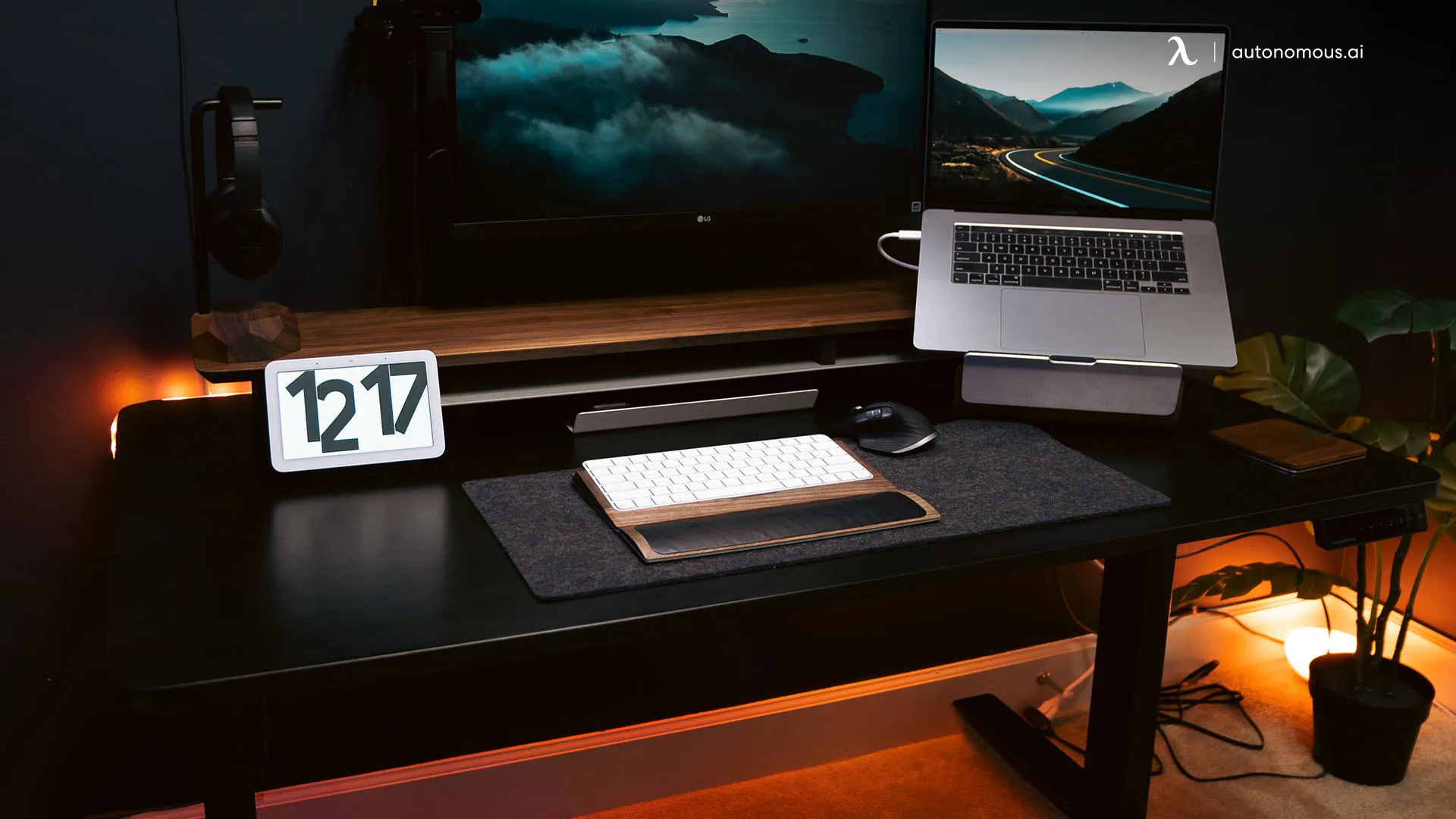
Lighting and Decor Compatibility
Creating a visually pleasing workspace involves more than choosing furniture. It's about integrating the right lighting that complements your office's overall design.
Matching Light with Office Style
When setting up an office, it's crucial to consider how the lighting will interact with the room's color scheme and furnishings. For instance, if you're considering a warm white vs. soft white light bulb, think about how these lights reflect off your office walls.
A warm white bulb can make rich wall colors seem more vibrant, enhancing wooden furniture and traditional decors, while a soft white bulb might better highlight modern, minimalist spaces with cooler color palettes.
Choosing Lighting for Functional Aesthetics
Lighting should also sync with your office accessories. Sleek, contemporary accessories such as metallic or glass items can be complemented by the crisp clarity of soft white light, which can make chrome finishes and glass surfaces gleam without overwhelming glare.
Ergonomics and Lighting
The functionality of your workspace is paramount, so consider how lighting affects your workstations.
A stand-up desk, for example, benefits from adjustable task lighting that can move with you as you change postures. This prevents shadows and reduces eye strain, which is essential for comfort and focus during long work sessions.
Comfort and Visibility
For those who spend hours in an office chair, ambient lighting that evenly illuminates the area without causing reflections on computer screens can reduce eye fatigue and create a more comfortable environment. Opt for indirect lighting fixtures that provide sufficient brightness without the harshness of direct beams.
Integrating lighting thoughtfully with decor and workspace needs not only enhances the aesthetic appeal but also boosts functionality, making your office a more productive and enjoyable place to work.
DIY Lighting Tips for Home Offices
Creating the right lighting in your home office doesn't have to be complicated or expensive. With a few simple tweaks, you can improve your workspace lighting on your own, making it a more pleasant and productive environment.
Selecting the Right Bulbs
The first step in DIY office lighting is choosing bulbs that suit your work habits and space.
While you already know the basics about warm white vs. soft white light bulb choices, consider how these will work in your specific home office setup.
Think about the natural light available and how these bulbs will complement or enhance it during different times of the day.
Easy Installation Techniques
Installing new lighting doesn't need special tools or skills. Start by adding desk or floor lamps if you want to avoid complicated installations.
These can be strategically placed to reduce glare on your computer screen and provide direct light where you need it most.
For overhead lighting, switching out an old bulb can be as simple as screwing in a new one that better fits your needs.
Enhancing Lighting Without Overdoing It
Balance is key in home office lighting. Use a combination of ambient and task lighting to cover your area effectively without creating excessive brightness.
This can involve setting up a small lamp next to your computer for tasks and using a softer overhead light to fill the rest of the room without overpowering your space.
Final Thoughts
Understanding the nuances between warm white vs. soft white light bulbs is crucial for creating the optimal workspace.
Whether you're deciding which bulb to use for your home office, adjusting light placement, or considering the aesthetics of your setup, the choice between warm and soft white can greatly affect both your productivity and well-being.
By carefully selecting and strategically placing the right type of lighting, you can enhance your work environment, reduce eye strain, and foster a space that is both inviting and effective for your daily tasks.
Spread the word
.svg)







